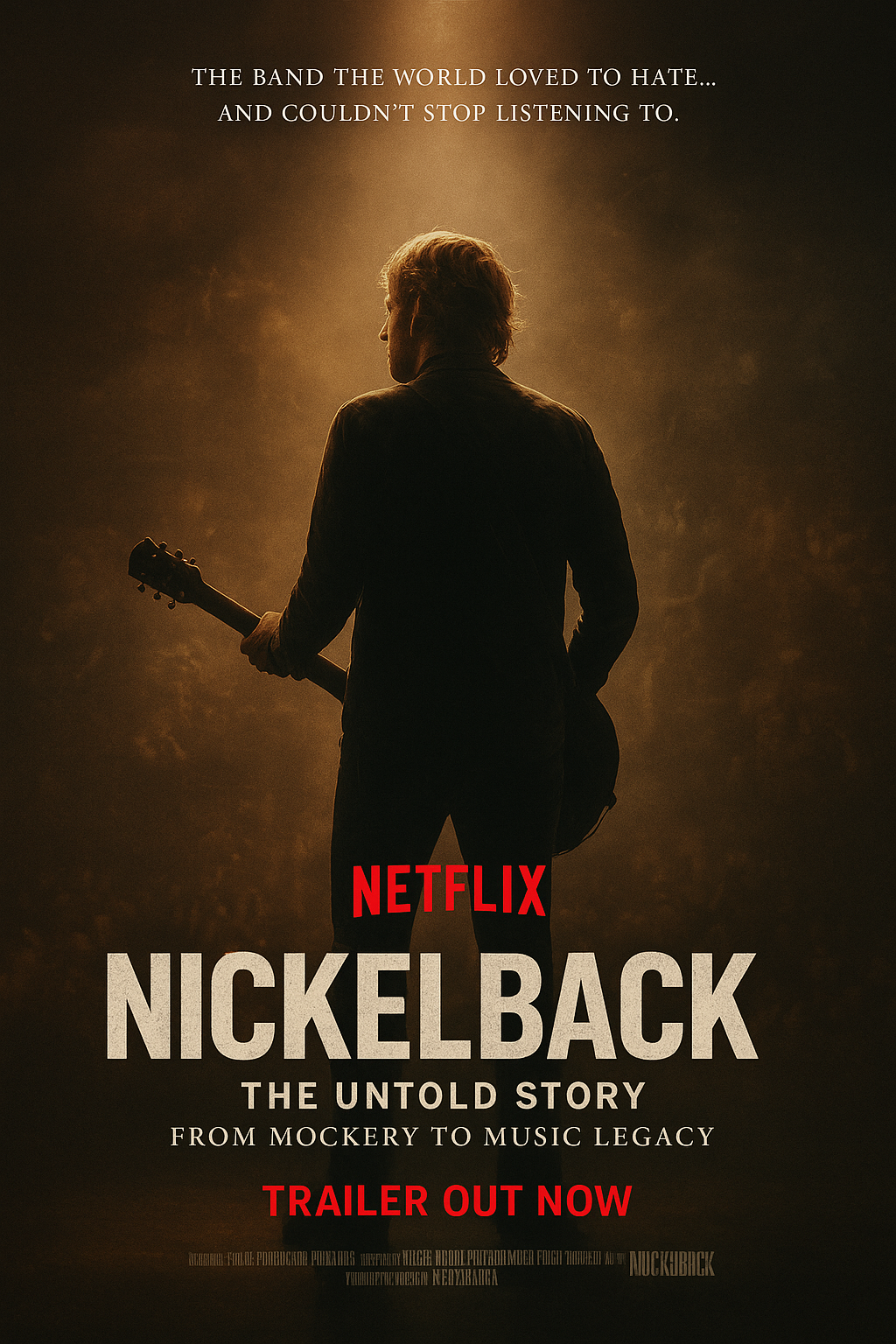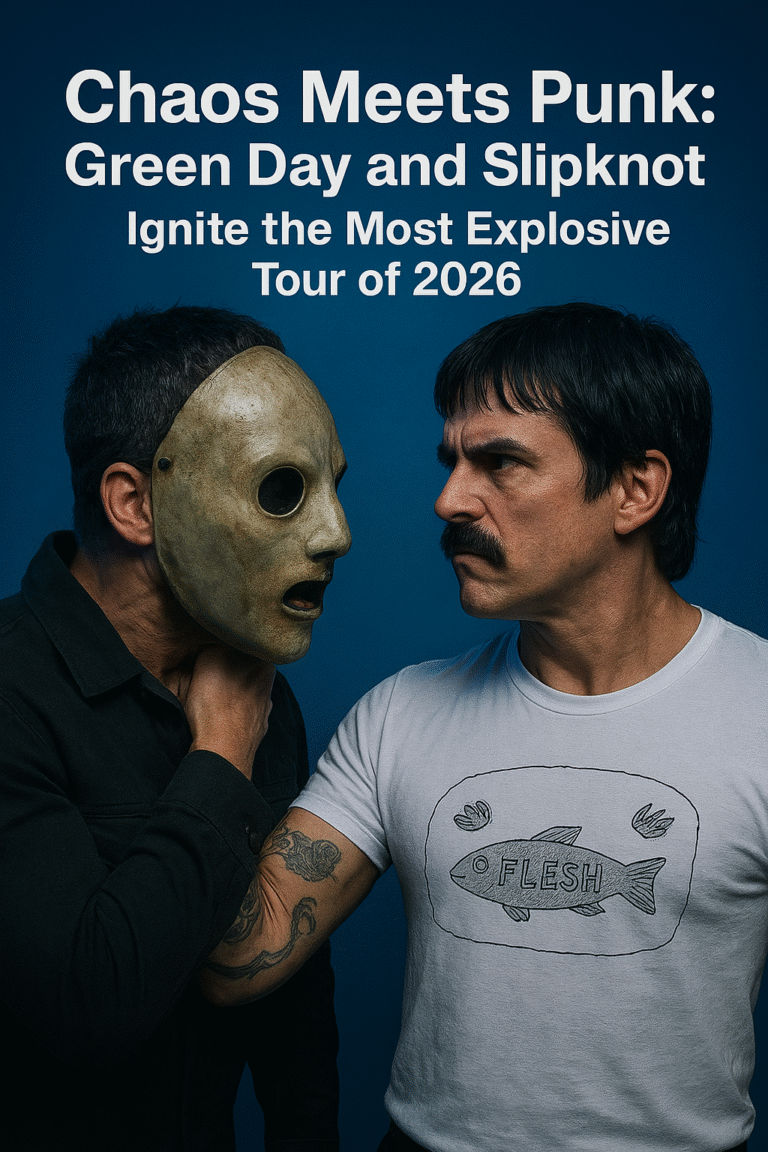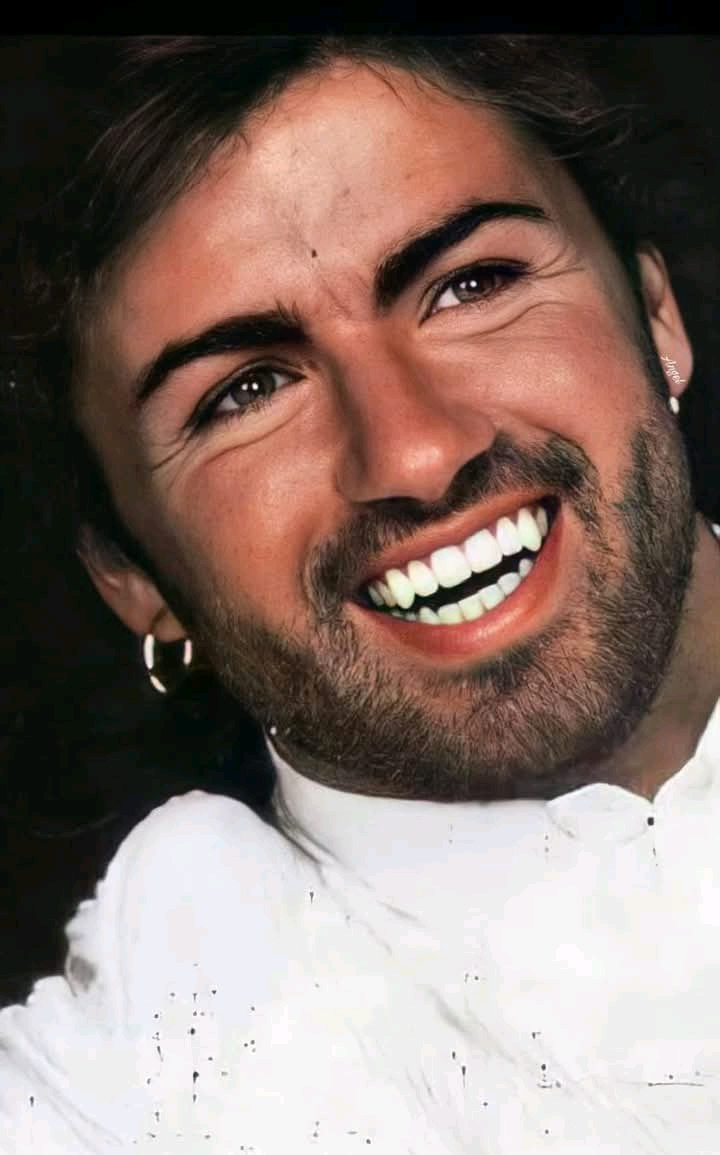
Few bands have walked the line between love and loathing quite like Nickelback. Over two decades into their career, they’ve sold millions of albums, filled arenas worldwide, and become the butt of countless internet jokes. Now, in a twist of fate both poetic and overdue, the band’s journey is getting the full cinematic treatment. The upcoming Nickelback documentary promises to unpack not only the band’s rise to fame but also the cultural phenomenon that made them one of rock’s most talked-about acts.
The film delves deep into their beginnings in Alberta, Canada — where four young musicians, led by frontman Chad Kroeger, chased the dream of making rock music that could fill stadiums. What began as small-town jam sessions quickly turned into something much larger. With hits like “How You Remind Me,” “Photograph,” and “Rockstar,” Nickelback dominated radio charts and soundtracked an entire generation’s coming of age. Yet, as fame grew, so did the backlash.
The documentary doesn’t shy away from the ridicule. Instead, it embraces it. Through candid interviews, the band members reflect on the meme culture, the endless criticism, and how they became an easy target for online humor. In one striking moment, Kroeger himself admits, “We never tried to be cool — we just wrote songs people could sing.” That statement becomes the film’s emotional core: a story about authenticity, endurance, and the power of not fitting in.
Visually, the film is stunning. Using archival footage, backstage moments, and cinematic recreations, the director builds a timeline that feels immersive and raw. Early footage of the band playing in small clubs contrasts sharply with the roaring stadium crowds of the early 2000s, reminding viewers of just how meteoric their ascent really was. Fans will get to see the brotherly bond between Chad and Mike Kroeger, the quiet humor of Ryan Peake, and the steadfast presence of drummer Daniel Adair — elements often overshadowed by the noise of public opinion.
What makes this documentary truly fascinating is its tone. Rather than attempting to rewrite Nickelback’s legacy, it simply holds up a mirror to it. It lets fans and critics alike draw their own conclusions. The storytelling balances sentiment with self-awareness, turning what could’ve been a defensive narrative into an honest reflection of fame and endurance.
The film also explores how Nickelback became a cultural punching bag. Commentators, music journalists, and fellow artists weigh in on the strange phenomenon: why a successful band became such an easy target. There’s humor in it, yes — but also empathy. Many interviewees admit that, love them or hate them, Nickelback never stopped showing up, never stopped touring, and never stopped writing songs that resonated with millions.
For longtime fans, the documentary feels like vindication. For casual listeners or former critics, it offers perspective. It reminds everyone that behind the headlines and memes are real musicians who built something lasting — not through image or hype, but through connection. The film captures that emotional undercurrent, especially in quieter moments showing the band at home, reflecting on the toll fame can take on friendships and mental health.
The trailer for the documentary sets the tone perfectly. Opening with a montage of grainy VHS clips of their early performances, it transitions into explosive live footage scored by the opening riff of “Burn It to the Ground.” A narrator’s voice intones, “They were the biggest band in the world — and the most hated. But how did it come to this?” As the music swells, clips flash of interviews, laughter, exhaustion, and redemption. The trailer ends on Kroeger, sitting in an empty arena, saying quietly, “If I had to do it all again, I would — every single note.”
Behind the scenes, the documentary’s production has been handled with care. The filmmakers spent over two years collecting material, interviewing family, collaborators, and fans from around the globe. The editing style merges modern documentary realism with rock-film spectacle, making it both heartfelt and high-octane. It’s less about image repair and more about setting the record straight — showing that Nickelback’s story is one of resilience and reinvention.
On November 21, 2026, the film is set for worldwide release, premiering both in select theaters and on major streaming platforms. The date marks 25 years since the release of “How You Remind Me,” their breakout hit that propelled them into the rock stratosphere. It’s a fitting anniversary — a moment that invites both nostalgia and reflection on how far they’ve come.
The buzz surrounding the film has already ignited renewed interest in the band. Streaming numbers are climbing, old albums are re-entering charts, and fans on social media are reclaiming their pride in loving Nickelback. It’s as if the world is finally ready to see past the jokes and appreciate the music again. The documentary doesn’t ask for forgiveness; it simply asks for understanding.
As the final credits roll, viewers are left with a powerful message: it’s easy to tear something down, but much harder to build something that lasts. Nickelback’s legacy may have been tangled in irony and controversy, but their music has endured — louder than the criticism, stronger than the memes. The documentary captures that spirit in full: a portrait of a band that never stopped believing in themselves, even when the world laughed the loudest.



